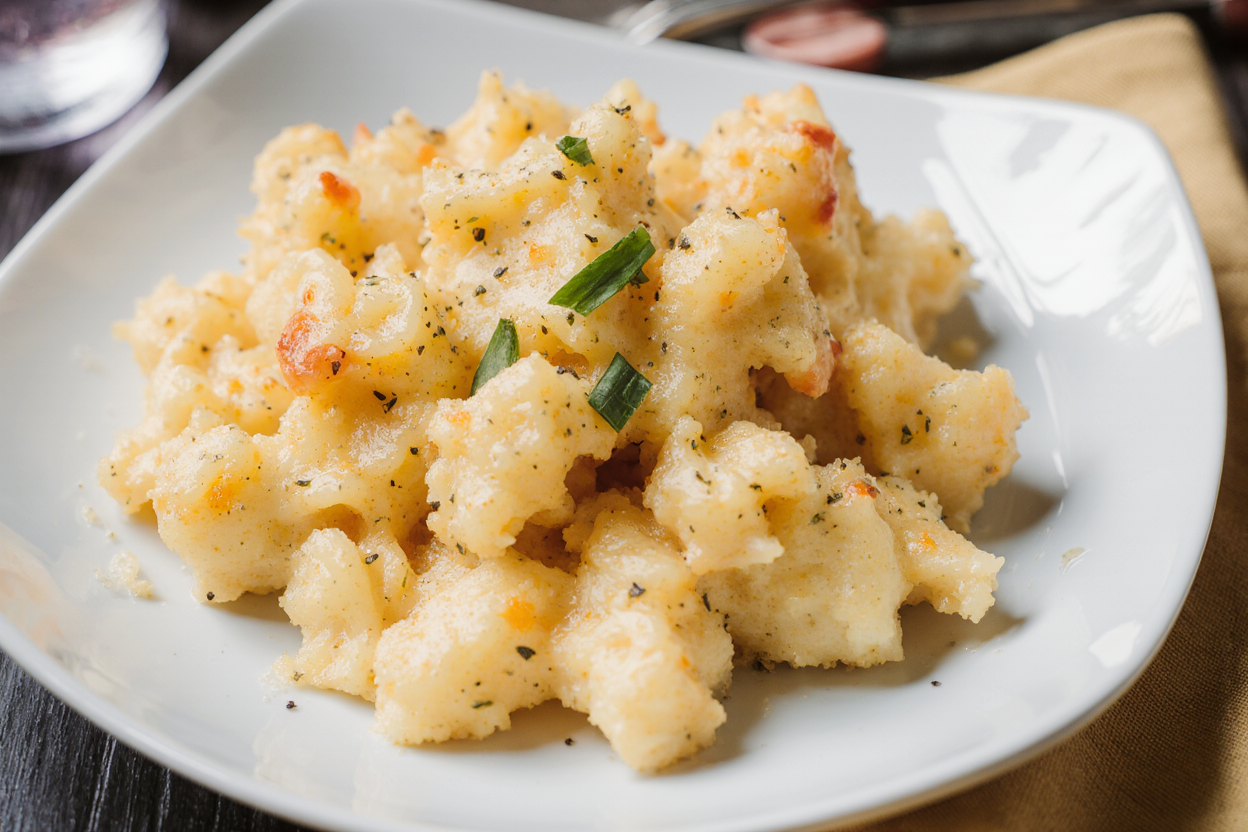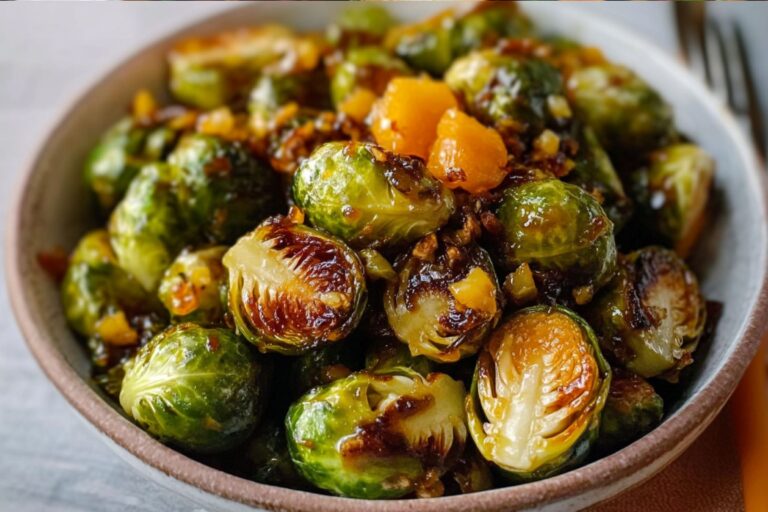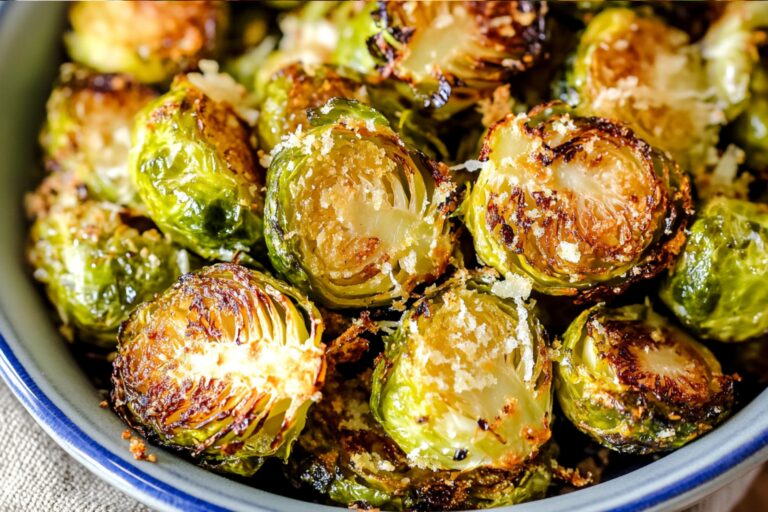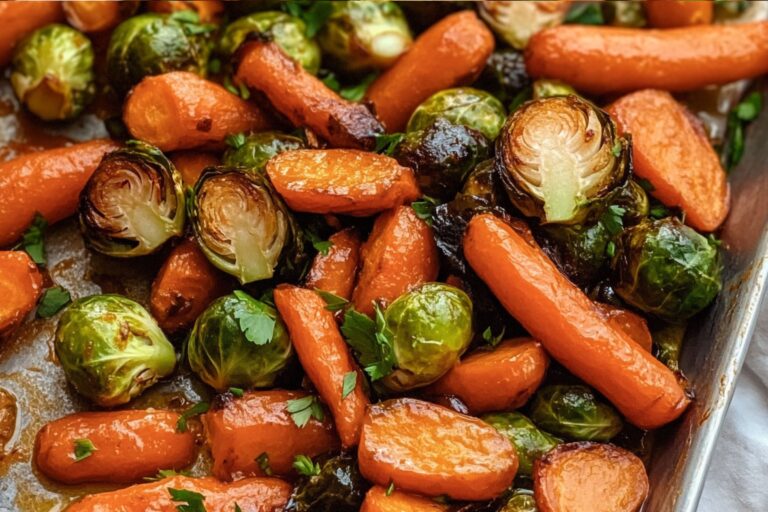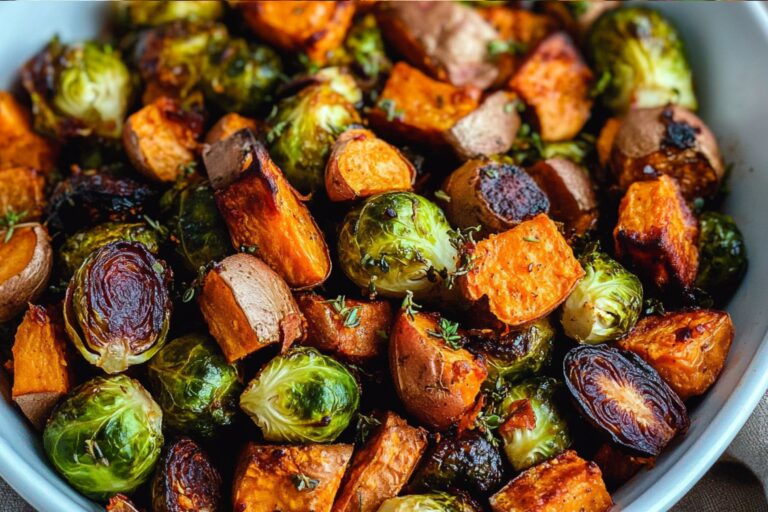Scrambled eggs are a breakfast classic—simple, quick, and comforting. But not all scrambled eggs are created equal. The difference between dry, rubbery eggs and fluffy, cloud-like perfection comes down to just a few easy tips and tricks. This guide will help you make fluffy, light scrambled eggs that taste like they came straight from a brunch café.
Whether you’re cooking for yourself, your family, or prepping ahead for the week, this foolproof recipe is here to upgrade your mornings. We’ll walk you through every step, from ingredients to technique, storage, and even customization ideas. Say goodbye to bland eggs and hello to your new favorite breakfast go-to!
Why You’ll Love This fluffy scrambled eggs
There’s a lot to love about this scrambled egg recipe, starting with how easy and fast it is. Ready in under 10 minutes, it’s perfect for busy mornings or lazy weekends.
You’ll also love how versatile it is—keep it simple or add herbs, cheese, or veggies to make it your own. Plus, eggs are a great source of protein and essential nutrients like B12 and choline, making this a healthy choice to start your day.
These scrambled eggs come out perfectly soft and fluffy every time, thanks to a few key techniques you’ll learn below. It’s a family-friendly recipe that even picky eaters enjoy, and it’s naturally gluten-free and low-carb.
What You’ll Need
Making fluffy scrambled eggs doesn’t require anything fancy—just a few fresh ingredients and basic kitchen tools. Here’s exactly what you’ll need:
Ingredients (for 2 servings):
- 4 large eggs – Use fresh, high-quality eggs for best results. Free-range or organic eggs offer richer flavor.
- 2 tablespoons milk or half-and-half – This adds creaminess and helps achieve a soft texture. For dairy-free, use unsweetened almond or oat milk.
- 1 tablespoon unsalted butter – For cooking and flavor. You can also use olive oil or avocado oil as an alternative.
- Salt to taste – About 1/8 teaspoon per 2 eggs is a good starting point.
- Black pepper to taste – Optional, but highly recommended.
Optional Add-Ins:
- Shredded cheese (cheddar, mozzarella, feta, etc.)
- Chopped fresh herbs (chives, parsley, dill)
- Sautéed vegetables (spinach, mushrooms, bell peppers)
Kitchen Tools:
- Medium nonstick skillet
- Silicone spatula or wooden spoon
- Mixing bowl
- Whisk or fork
Keeping it simple is key. The real magic happens in the technique, which we’ll break down next.
How to Make Fluffy Scrambled Eggs
Follow these steps closely for soft, creamy scrambled eggs that never disappoint.
Step 1: Crack & Whisk
In a mixing bowl, crack 4 large eggs. Add 2 tablespoons of milk and a pinch of salt and pepper. Whisk vigorously for 30–60 seconds until the mixture is smooth, pale yellow, and slightly frothy. This helps incorporate air for fluffier results.
Step 2: Preheat the Pan
Place a nonstick skillet over medium-low heat. Add 1 tablespoon of butter and let it melt slowly. You don’t want the pan too hot—low and slow is the secret to tender eggs.
Step 3: Pour & Stir Gently
Pour the egg mixture into the warm pan. Let it sit for 10–15 seconds, then gently stir with a silicone spatula, pushing eggs from the edges toward the center. Repeat this motion continuously but slowly, forming soft folds.
Step 4: Remove While Slightly Undercooked
When the eggs are mostly set but still slightly glossy and moist, remove the pan from heat. The residual heat will finish cooking them. Overcooking will make them dry—don’t wait for them to look completely done in the pan.
Step 5: Customize and Serve
Now’s the time to stir in cheese, herbs, or any other mix-ins you like. Serve immediately while hot and creamy.

You Must Know
Even a simple dish like scrambled eggs has a few secrets. First, cook low and slow—high heat will make your eggs rubbery. Use a nonstick skillet and don’t overwhisk the eggs; just mix until smooth and lightly frothy.
Add salt before cooking for creamier texture, and always remove from heat early—eggs continue cooking from residual heat. Overcrowding the pan is another common mistake. Stick to small batches for best results. These small tips make a big difference in turning your eggs soft and fluffy.
Perfecting the Cooking Process
To get perfect scrambled eggs, keep the heat low and stir gently. Use the stir-pause-stir method: let the eggs sit for a few seconds, then slowly fold from the edges to the center. This creates soft, creamy layers instead of tiny bits.
Use butter for flavor or a neutral oil like avocado if dairy-free. Don’t overcook—take the eggs off the stove while still a little glossy. Finish with optional toppings like herbs or cheese after cooking to avoid a watery texture.
Add Your Touch for fluffy scrambled eggs
Scrambled eggs are a perfect base to get creative. Add fresh herbs like chives, parsley, or dill for brightness. Stir in shredded cheese—cheddar, mozzarella, or feta—for extra creaminess and flavor. You can also fold in sautéed veggies such as spinach, mushrooms, or bell peppers to boost nutrition and texture.
For a spicy kick, sprinkle in some smoked paprika or a dash of hot sauce after cooking. Want something indulgent? Try stirring in a little cream cheese or a dollop of sour cream just before serving. These simple additions make your scrambled eggs truly your own.
Storing & Reheating
Scrambled eggs are best eaten fresh but can be stored. Place leftovers in an airtight container and refrigerate for up to 2 days. To reheat, warm gently in a skillet over low heat or microwave in short bursts, stirring between, to avoid drying them out.
Avoid reheating at high heat or for too long—this causes eggs to become tough and rubbery. Adding a small splash of milk or butter when reheating helps restore their creamy texture.
Chef’s Helpful Tips for fluffy scrambled eggs
To get consistently fluffy scrambled eggs, always use fresh eggs and whisk well to incorporate air. Patience is key—cook on low heat and stir gently for soft curds. Avoid rushing by turning up the heat, which leads to dryness.
Use a silicone spatula to gently fold the eggs rather than scraping aggressively. If you like richer eggs, add a splash of cream or milk. For a dairy-free option, try almond milk or coconut cream.
Remember to season simply and taste as you go—salt early, pepper later. And don’t forget, removing eggs from heat just before fully cooked keeps them tender and moist.
FAQ for fluffy scrambled eggs
Q: Can I make scrambled eggs ahead of time?
A: It’s best fresh, but you can refrigerate leftovers for up to 2 days and gently reheat.
Q: What milk works best in scrambled eggs?
A: Dairy milk, half-and-half, or unsweetened plant-based milks like almond or oat milk all work well.
Q: How do I avoid rubbery eggs?
A: Cook on low heat, stir gently, and remove from heat when slightly undercooked.
Q: Can I add cheese or veggies?
A: Absolutely! Add cheese after cooking or fold in sautéed veggies during cooking for extra flavor and nutrition.
Conclusion
Scrambled eggs are a timeless favorite—simple, quick, and endlessly adaptable. With the right techniques and a few easy tips, you can elevate your eggs to fluffy, creamy perfection every time. Whether you enjoy them plain or loaded with your favorite herbs, cheese, or veggies, this recipe offers a reliable foundation for success.
Remember to whisk well, cook gently over low heat, and remove from the pan just before they look fully set. These small steps make all the difference between rubbery eggs and soft, light clouds of breakfast bliss.
So next time you crack open your eggs, try these tips and watch how your scrambled eggs transform. Happy cooking!
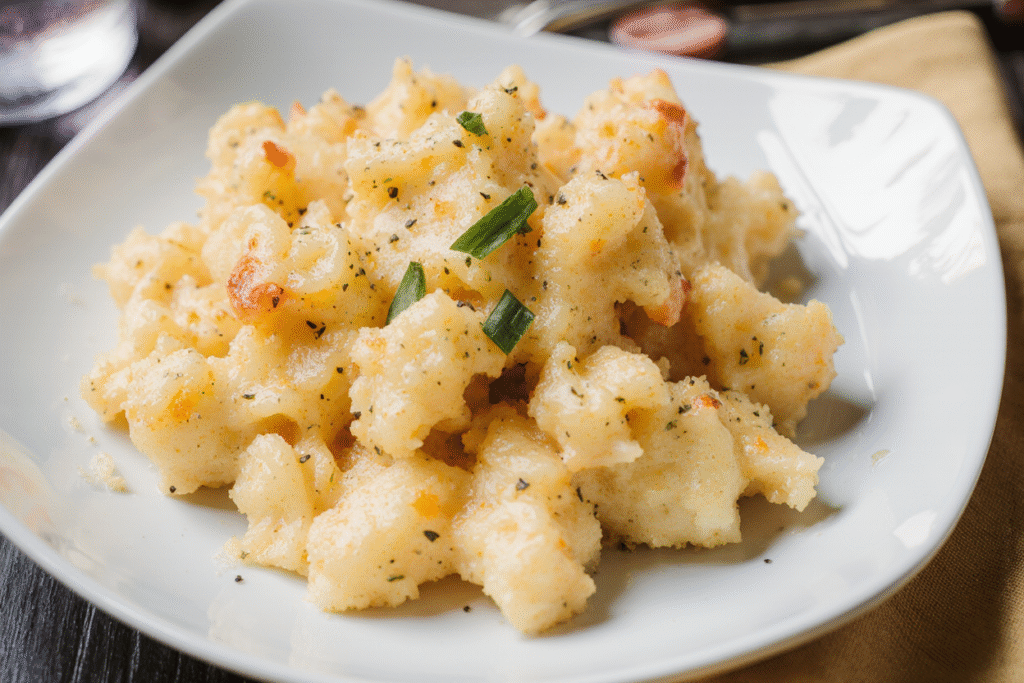
The Secret to Fluffy & Light Scrambled Eggs You’ll Love
Description
Quick and easy fluffy scrambled eggs made creamy and light — perfect for breakfast or anytime you want a simple, protein-packed meal.
Ingredients
Instructions
Crack eggs into a bowl; add milk, salt, and pepper. Whisk until smooth and slightly frothy.
Heat butter in a nonstick pan over low heat until melted.
Pour egg mixture into the pan. Let sit 10 seconds, then gently stir with a spatula, folding eggs from edges to center.
Remove from heat when eggs are mostly set but still slightly glossy. Serve immediately.
Notes
- Use low heat to keep eggs soft and avoid rubberiness.
Add cheese or herbs after cooking for extra flavor.
Serve with toast or fresh veggies for a balanced meal.

